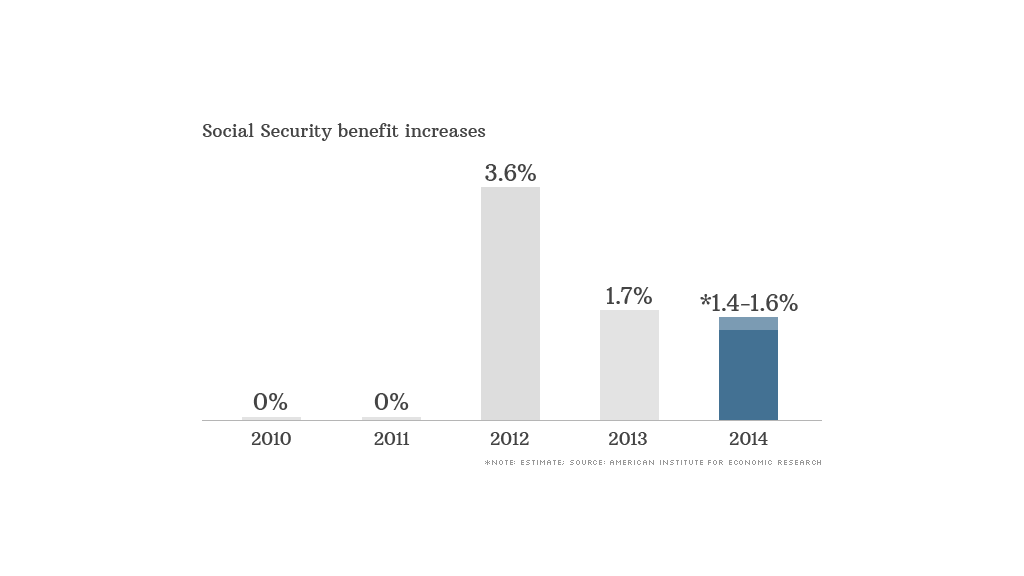
The cost-of-living adjustment in Social Security for 2014 is likely to be very small, marking the fourth year in the last five that recipients receive little or no increase in benefits.
Social Security benefits are expected to rise between 1.4% and 1.6% next year, according to the American Institute for Economic Research. That follows a 1.7% increase in 2013 and no increases in 2010 and 2011. A 3.6% adjustment in 2012 has been the only significant rise in benefits in recent years.
The increases have been small because inflation has been tame. But it's not clear that these adjustments really cover the increasing costs faced by retirees, who have different spending habits than the overall population.
For example, seniors spend more on health care than the younger population, and government figures show the cost of medical care rose 2.5% over the past year.
And senior citizens may not benefit as much from falling gas prices. Most don't commute to work, so the 2.4% drop in gas prices over the last year won't much of a savings to them.
Related: The Social Security mistake that costs retirees thousands
The cost of living adjustments for Social Security and veterans' benefits are currently based on the Consumer Price Index for workers, one of the government's main inflation readings.

But that could change soon, putting a squeeze on retiree benefits. There are proposals from the Obama administration and some members of Congress to switch to using so-called "chained CPI."
Related: Are Social Security payments at risk from the shutdown?
Chained CPI tracks changes in spending habits that are caused by rising prices. For example, if an increase in the price of red meat causes consumers to shift to chicken, chained CPI adjusts for that change in spending habits. Since consumers cut back on goods and services when their prices rise, chained CPI is always lower than the traditional CPI calculation, which assumes no change in buying habits.
A switch to chained CPI would cut future cost of living increases to Social Security recipients. That in turn would likely trim hundreds of billions of dollars off of the nation's deficit in coming decades.
If chained CPI had been used over the last 10 years, Social Security benefits today would be 3% below current levels, according to Polina Vlasenko, an AIER research fellow.
The final calculation for 2014 benefits will come after the Labor Department releases its September CPI report. This year's calculation, originally set for Wednesday, has been delayed by the government shutdown.


